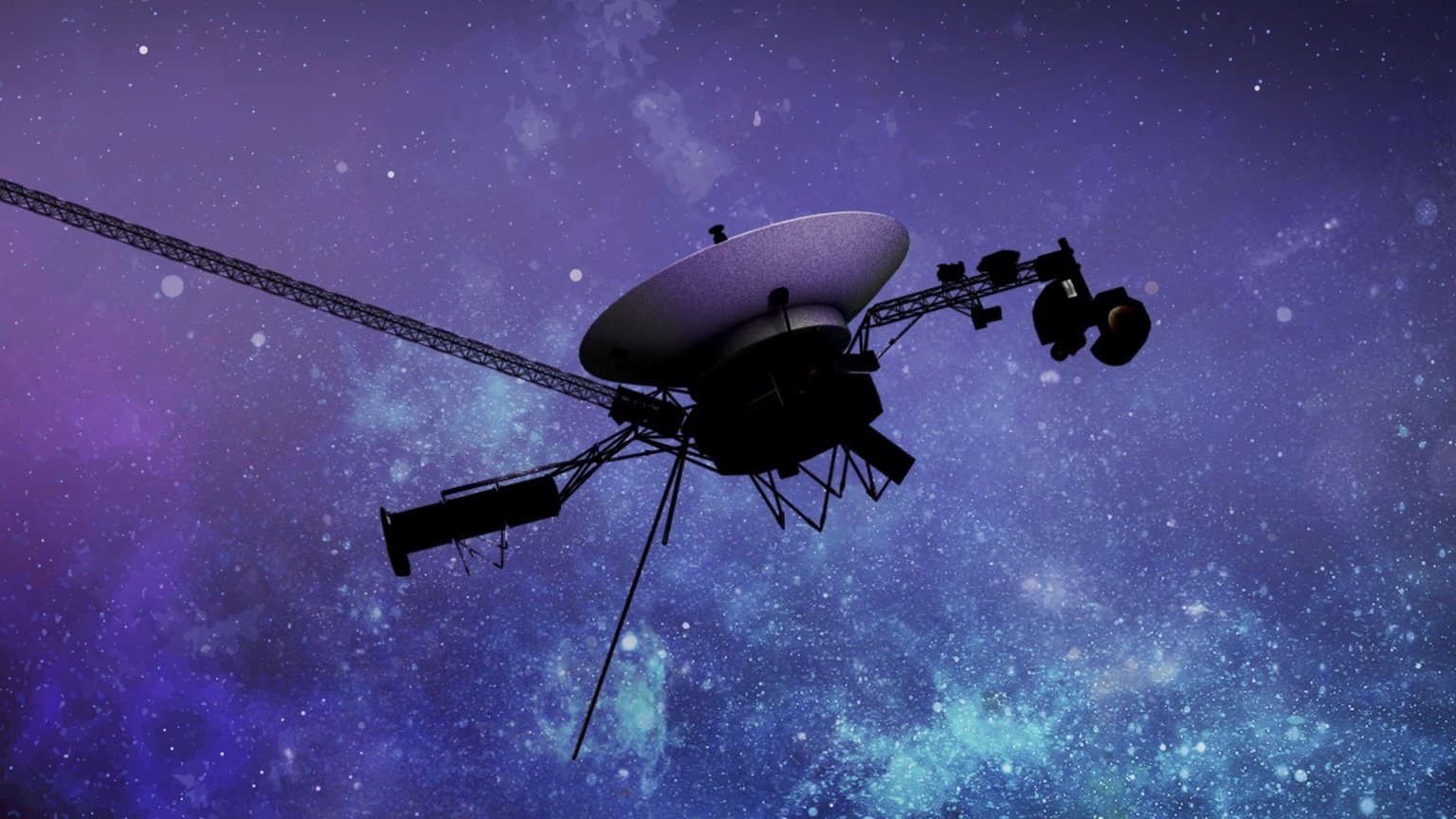Voyager 1 was launched waaaaaay back in 1977. I would have been 4 years old then! It’s an incredible achievement that technology that was built THAT long ago is still working. Yet here we are in 2024, Voyager 1 and 2 are getting older. Earlier this week, NASA had to turn off one of the radio transmitters on Voyager 1. This forced communication to rely upon the low-power radio. Alas technology around 50 years old does sometimes glitch and this was the result of a command to turn on a heater. The result was that Voyager 1 tripped into fault protection mode and switch communications! Oops.
Continue reading “Voyager 1 is Forced to Rely on its Low Power Radio”NASA Turns Off One of Voyager 2's Science Instruments
The two Voyager spacecraft have been speeding through space since 1977, powered by decaying chunks of plutonium that produce less and less energy every year. With less electricity available, NASA has decided to shut down one experiment on Voyager 2, the plasma science instrument. This device measures the quantity and direction of ionized particles passing the spacecraft. While Voyager 2 still has enough electricity to support its four other operational instruments, it will likely be down to just one by the 2030s.
Continue reading “NASA Turns Off One of Voyager 2's Science Instruments”NASA is Fixing its Link to Voyager 1
Voyagers 1 and 2 were, to put it simply, incredible. They were true explorers and unveiled many mysteries of the outer Solar System, revealing the outer planets in all their glory. Communication with Voyager 1 has until recently been possible, slow but possible. More recently however, it has been sending home garbled data rendering communication to all intents impossible although messages can still be sent. Engineers at NASA have narrowed the problem down to an onboard computer, the Flight Data System (FDS). A dump of the entire memory of the FDS has now been received so that engineers can attempt to troubleshoot and fix the issue.
Continue reading “NASA is Fixing its Link to Voyager 1”Voyager 1 Has Another Problem With its Computer System
For more than 46 years, the Voyager 1 probe has been traveling through space. On August 25th, 2012, it became the first spacecraft to cross the heliopause and enter interstellar space. Since then, mission controllers have maintained contact with the probe as part of an extended mission, which will last until the probe’s radioisotopic thermoelectric generators (RTGs) finally run out. Unfortunately, the Voyager 1 probe has been showing its age and signs of wear and tear, which is unavoidable when you’re the farthest spacecraft from Earth.
This includes issues with some of the probe’s subsystems, which have been a bit buggy lately. For instance, engineers at NASA recently announced that they were working to resolve an error with the probe’s flight data system (FDS). This system consists of three onboard computers responsible for communicating with another of Voyager 1’s subsystems, known as the telemetry modulation unit (TMU). As a result, while the spacecraft can receive and execute commands sent from Earth, it cannot send any science or engineering data back.
Continue reading “Voyager 1 Has Another Problem With its Computer System”New Horizons is Now 50 Astronomical Units Away From the Sun
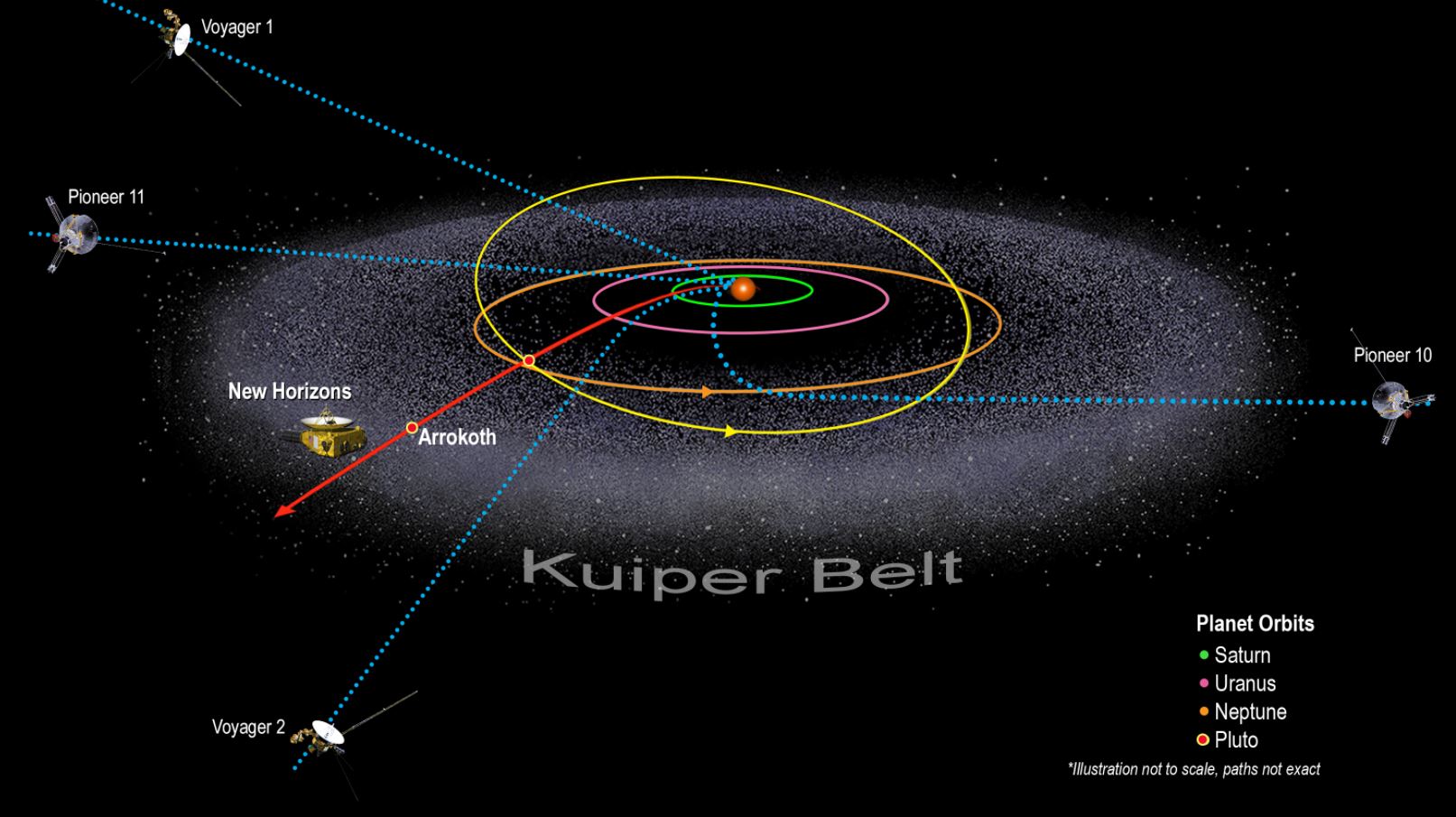
As the New Horizons spacecraft hurtles out towards interstellar space, it has now reached an historical milestone. On April 17, 2021, New Horizons passed 50 astronomical units, or 50 times Earth’s distance from the Sun. It is just the 5th spacecraft to reach that distance, joining the Voyagers 1 and 2 and the Pioneers 10 and 11.
Continue reading “New Horizons is Now 50 Astronomical Units Away From the Sun”The Pale Blue Dot: Now New and Improved

Thirty years have now passed since the Voyager 1 spacecraft snapped one of the most iconic and memorable pictures in spaceflight history. Known as the “Pale Blue Dot,” the heart-rending view shows planet Earth as a single, bright blue pixel in the vastness of space, as seen from the outer reaches of the solar system.
Now, NASA and the Jet Propulsion Laboratory have provided a new and improved version, using state of the art image-processing software and techniques to reprocess the thirty-year-old image. JPL software engineer and image processor Kevin Gill, whose images we feature often on Universe Today, led the effort.
Continue reading “The Pale Blue Dot: Now New and Improved”NASA has Figured Out How to Extend the Lives of the Voyagers Even Longer

Voyagers 1 and 2 have the distinction of being in space for 42 years and still operating. And even though they’re 18 billion km (11 billion miles) from the Sun, they’re still valuable scientifically. But they’re running out of energy, and if NASA wants them to continue on much longer, they have some decisions to make.
Continue reading “NASA has Figured Out How to Extend the Lives of the Voyagers Even Longer”What About a Mission to Titan?
As you probably know, NASA recently announced plans to send a mission to Jupiter’s moon Europa. If all goes well, the Europa Clipper will blast off for the world in the 2020s, and orbit the icy moon to discover all its secrets.
And that’s great and all, I like Europa just fine. But you know where I’d really like us to go next? Titan.
Titan, as you probably know, is the largest moon orbiting Saturn. In fact, it’s the second largest moon in the Solar System after Jupiter’s Ganymede. It measures 5,190 kilometers across, almost half the diameter of the Earth. This place is big.
It orbits Saturn every 15 hours and 22 days, and like many large moons in the Solar System, it’s tidally locked to its planet, always showing Saturn one side.

Before NASA’s Voyager spacecraft arrived in 1980, astronomers actually thought that Titan was the biggest moon in the Solar System. But Voyager showed that it actually has a thick atmosphere, that extends well into space, making the true size of the moon hard to judge.
This atmosphere is one of the most interesting features of Titan. In fact, it’s the only moon in the entire Solar System with a significant atmosphere. If you could stand on the surface, you would experience about 1.45 times the atmospheric pressure on Earth. In other words, you wouldn’t need a pressure suit to wander around the surface of Titan.
You would, however, need a coat. Titan is incredibly cold, with an average temperature of almost -180 Celsius. For you Fahrenheit people that’s -292 F. The coldest ground temperature ever measured on Earth is almost -90 C, so way way colder.
You would also need some way to breathe, since Titan’s atmosphere is almost entirely nitrogen, with trace amounts of methane and hydrogen. It’s thick and poisonous, but not murderous, like Venus.
Titan has only been explored a couple of times, and we’ve actually only landed on it once.
The first spacecraft to visit Titan was NASA’s Pioneer 11, which flew past Saturn and its moons in 1979. This flyby was followed by NASA’s Voyager 1 in 1980 and then Voyager 2 in 1981. Voyager 1 was given a special trajectory that would take it as close as possible to Titan to give us a close up view of the world.

Voyager was able to measure its atmosphere, and helped scientists calculate Titan’s size and mass. It also got a hint of darker regions which would later turn out to be oceans of liquid hydrocarbons.
The true age of Titan exploration began with NASA’s Cassini spacecraft, which arrived at Saturn on July 4, 2004. Cassini made its first flyby of Titan on October 26, 2004, getting to within 1,200 kilometers or 750 miles of the planet. But this was just the beginning. By the end of its mission later this year, Cassini will have made 125 flybys of Titan, mapping the world in incredible detail.
Cassini saw that Titan actually has a very complicated hydrological system, but instead of liquid water, it has weather of hydrocarbons. The skies are dotted with methane clouds, which can rain and fill oceans of nearly pure methane.
And we know all about this because of Cassini’s Huygen’s lander, which detached from the spacecraft and landed on the surface of Titan on January 14, 2005. Here’s an amazing timelapse that shows the view from Huygens as it passed down through the atmosphere of Titan, and landed on its surface.
Huygens landed on a flat plain, surrounded by “rocks”, frozen globules of water ice. This was lucky, but the probe was also built to float if it happened to land on liquid instead.
It lasted for about 90 minutes on the surface of Titan, sending data back to Earth before it went dark, wrapping up the most distant landing humanity has ever accomplished in the Solar System.
Although we know quite a bit about Titan, there are still so many mysteries. The first big one is the cycle of liquid. Across Titan there are these vast oceans of liquid methane, which evaporate to create methane clouds. These rain, creating mists and even rivers.

Is it volcanic? There are regions of Titan that definitely look like there have been volcanoes recently. Maybe they’re cryovolcanoes, where the tidal interactions with Saturn cause water to well up from beneath crust and erupt onto the surface.
Is there life there? This is perhaps the most intriguing possibility of all. The methane rich system has the precursor chemicals that life on Earth probably used to get started billions of years ago. There’s probably heated regions beneath the surface and liquid water which could sustain life. But there could also be life as we don’t understand it, using methane and ammonia as a solvent instead of water.
To get a better answer to these questions, we’ve got to return to Titan. We’ve got to land, rove around, sail the oceans and swim beneath their waves.
Now you know all about this history of the exploration of Titan. It’s time to look at serious ideas for returning to Titan and exploring it again, especially its oceans.
Planetary scientists have been excited about the exploration of Titan for a while now, and a few preliminary proposals have been suggested, to study the moon from the air, the land, and the seas.
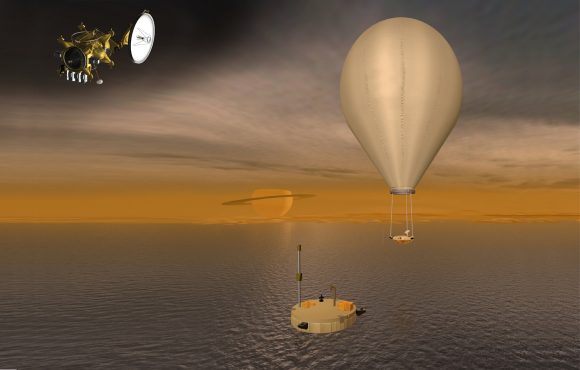
First up, there’s the Titan Saturn System Mission, a mission proposed in 2009, for a late 2020s arrival at Titan. This spacecraft would consist of a lander and a balloon that would float about in the atmosphere, and study the world from above. Over the course of its mission, the balloon would circumnavigate Titan once from an altitude of 10km, taking incredibly high resolution images. The lander would touch down in one of Titan’s oceans and float about on top of the liquid methane, sampling its chemicals.
As we stand right now, this mission is in the preliminary stages, and may never launch.

In 2012, Dr. Jason Barnes and his team from the University of Idaho proposed sending a robotic aircraft to Titan, which would fly around in the atmosphere photographing its surface. Titan is actually one of the best places in the entire Solar System to fly an airplane. It has a thicker atmosphere and lower gravity, and unlike the balloon concept, an airplane is free to go wherever it needs powered by a radioactive thermal generator.
Although the mission would only cost about $750 million or so, NASA hasn’t pushed it beyond the conceptual stage yet.

An even cooler plan would put a boat down in one of Titan’s oceans. In 2012, a team of Spanish engineers presented their idea for how a Titan boat would work, using propellers to put-put about across Titan’s seas. They called their mission the Titan Lake In-Situ Sampling Propelled Explorer, or TALISE.
Propellers are fine, but it turns out you could even have a sailboat on Titan. The methane seas have much less density and viscosity than water, which means that you’d only experience about 26% the friction of Earth. Cassini measured windspeeds of about 3.3 m/s across Titan, which half the average windspeed of Earth. But this would be plenty of wind to power a sail when you consider Titan’s thicker atmosphere.
And here’s my favorite idea. A submarine. This 6-meter vessel would float on Titan’s Kraken Mare sea, studying the chemistry of the oceans, measuring currents and tides, and mapping out the sea floor.
It would be capable of diving down beneath the waves for periods, studying interesting regions up close, and then returning to the surface to communicate its findings back to Earth. This mission is in the conceptual stage right now, but it was recently chosen by NASA’s Innovative Advanced Concepts Group for further study. If all goes well, the submarine would travel to Titan by 2038 when there’s a good planetary alignment.
Okay? Are you convinced? Let’s go back to Titan. Let’s explore it from the air, crawl around on the surface and dive beneath its waves. It’s one of the most interesting places in the entire Solar System, and we’ve only scratched the surface.
If I’ve done my job right, you’re as excited about a mission to Titan as I am. Let’s go back, let’s sail and submarine around that place. Let me know your thoughts in the comments.
91 Astronomers Combine 1000 Images Into One Amazing Journey to Jupiter
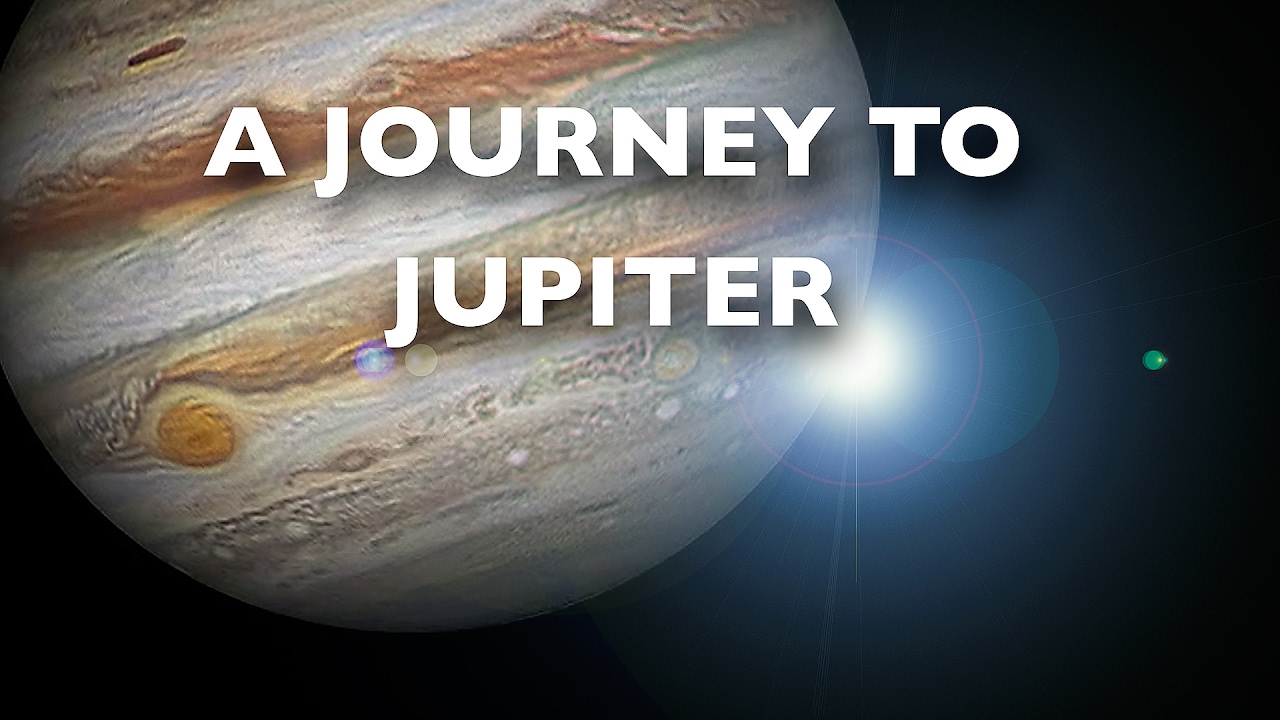
A renewed era of space exploration is underway. Compared to the Space Race of the 20th century, which was characterized by two superpowers locked in a game of “getting there first”, the new era is defined predominantly by cooperation and open participation. One way in which this is evident is the role played by “citizen scientists” and amateur astronomers in exploration missions.
Consider the recently-released short film titled “A Journey to Jupiter” by Peter Rosen – a photographer and digital artist in Stockholm, Sweden. Using over 1000 images taken by amateur planetary photographers from around the world, this film takes viewers on a virtual journey to the Jovian planet, showcasing its weather patterns and dynamic nature in a way that is truly inspiring.
The images that went into making this video were collected by over 91 amateur astronomers over the course of three and a half months (between December 19th, 2014 and March 31st, 2015). After Rosen collected them, he and his associates (Christoffer Svenske and Johan Warell) then spent a year remapping them into cylindrical projections. Rosen then added color corrections, and stitched all the images into a total of 107 maps.
Much like fast-motion videos that illustrate weather patterns on Earth, or the passage of the stars across the night sky, the end result of was a film that shows the motions of Jupiter’s cloud belts and its Great Red Spot in high-resolution. Some 250 revolutions of the planet are illustrated, including from the equatorial band, the south pole, and the north pole.
As Rosen told Universe Today via email, this project was the latest in a lifelong pursuit of making astronomy accessible to the public:
“I have been into Astronomy since I was a teenager in the early 1970’s and immediately I got a passion for astrophotography, and more specifically, photographing the planets. I see astronomy as a life-long passion, so it is quite normal to strive for an evolution in what you do. I had an idea growing slowly for some years that it should be possible to animate the cloud belts of Jupiter and reveal the intricate dynamics of its flows, not just taking still pictures that might point to the changes in the structures but without the obvious visual dynamics of an animation.”
“A Journey to Jupiter” was also Rosen’s contribution to the Mission Juno Pro-Amateur Collaboration Project, of which he is part. Established by Glenn Orton of NASA’s Jet Propulsion Laboratory, this effort is one of several that seeks to connect amateurs and professionals in support of space exploration. Back in May of 2016, this group met in Nice, France, for a workshop dedicated to projects and techniques related to Jupiter observations.

Among other items discussed was the limitations that missions like Juno have to deal with. While it is capable of taking very-high resolution images of Jupiter, these images are highly specific in nature. And before a team of mission scientists are able to color-correct them and stitch them together to create panoramas, etc., they are not always what you might call “visually stunning”.
However, Earth-based observatories are not hampered by this restriction, and can take multiple images of a planet over time that capture it as a whole. And thanks to the availability of sophisticated telescopes and imaging software, amateur astronomers are capable of making important contributions in this regard. And far from these being strictly for scientific purposes, there is also the added benefit of public engagement.
“This has been a very technical and scientifically correct project,” said Rosen, “but as a photographer and digital artist I also wanted to create a work of art that would inspire and appeal to people who are fascinated by the universe but who are not necessarily into astronomy.”
Of course, this does not detract from the scientific value that this film has. For example, it showcases the turbulent nature of Jupiter’s atmosphere in a way that is scientifically accurate. Hence why Ricardo Hueso Alonso – a physicist at the University of Basque Country and a member of the Planetary Virtual Observatory and Laboratory (PVOL) – plans to use the maps to measure Jupiter’s wind speeds at different latitudes.
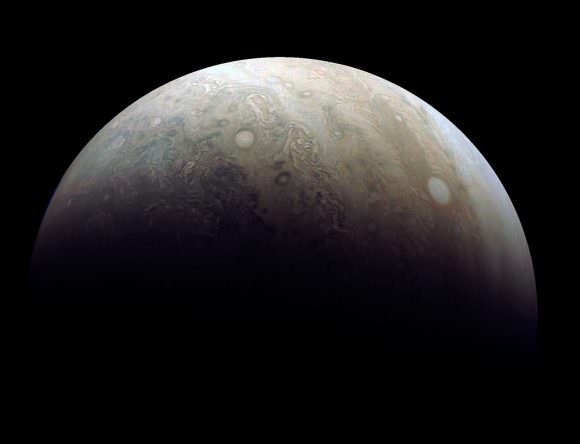
On top of its artistic and scientific merit, “A Journey to Jupiter” also serves as a testament to the skill and capability of the today’s amateur astronomers and planetary photographers. And of course, it draws attention to the efforts of space missions such as Juno, which is currently skimming the clouds of Jupiter to obtain the most comprehensive information about the planet’s atmosphere and magnetic field to date.
Not surprisingly, this is not the first film by Rosen that combines scientific accuracy and fast-motion visuals. The short film Voyager 3, released back in June of 2014, was an homage by Rosen and six other Swedish amateur astronomers to the Voyager 1 mission. As the probe made its 28-day final approach to Jupiter in 1979, it snapped what were the most detailed images of Jupiter at the time.
These images helped to improve our understanding of the gas giant, its atmosphere, and its moons. Among other things, hey revealed the turbulent nature of Jupiter’s atmosphere, and that the Great Red Spot had changed color since the Pioneer 10 and 11 missions had flown by in 1973 and 74. Produced 35 years later, Voyager 3 was an attempt to recreate this historic event using images taken by Swedish amateur astronomers using their own ground-based telescopes.
Over the course of 90 days, Rosen and his colleagues captured one million frames of Jupiter, which resulted in 560 still images of the planet. These were then stitched together using a series of software programs (Winjupos, Photoshop CS6, Fantamorph, and StarryNightPro+) to create a simulation that gives the impression of a probe approaching the planet – i.e. like a third Voyager mission, hence the name of the film.
“As Jupiter was ideally positioned high in the sky in 2013-2014 for us living far up in the northern hemisphere, I decided that it was the right moment to give it a try, so I contacted 6 other amateurs on our local forum that shared my passion for the planets,” Rosen said. “We photographed Jupiter as often as we could during a 3-month period and I took care of the processing of the images which took me a total of 6 months.”
It is an exciting time to be alive. Not only are a greater number of national space agencies taking part in the exploration of the Solar System; but more than ever, citizen scientists, amateurs and members of the general public are able to participate in a way that was never before possible.
To view more work by Peter Rosen, be sure to check out his page at Vimeo.
Further Reading: NASA
How Do We Terraform Saturn’s Moons?
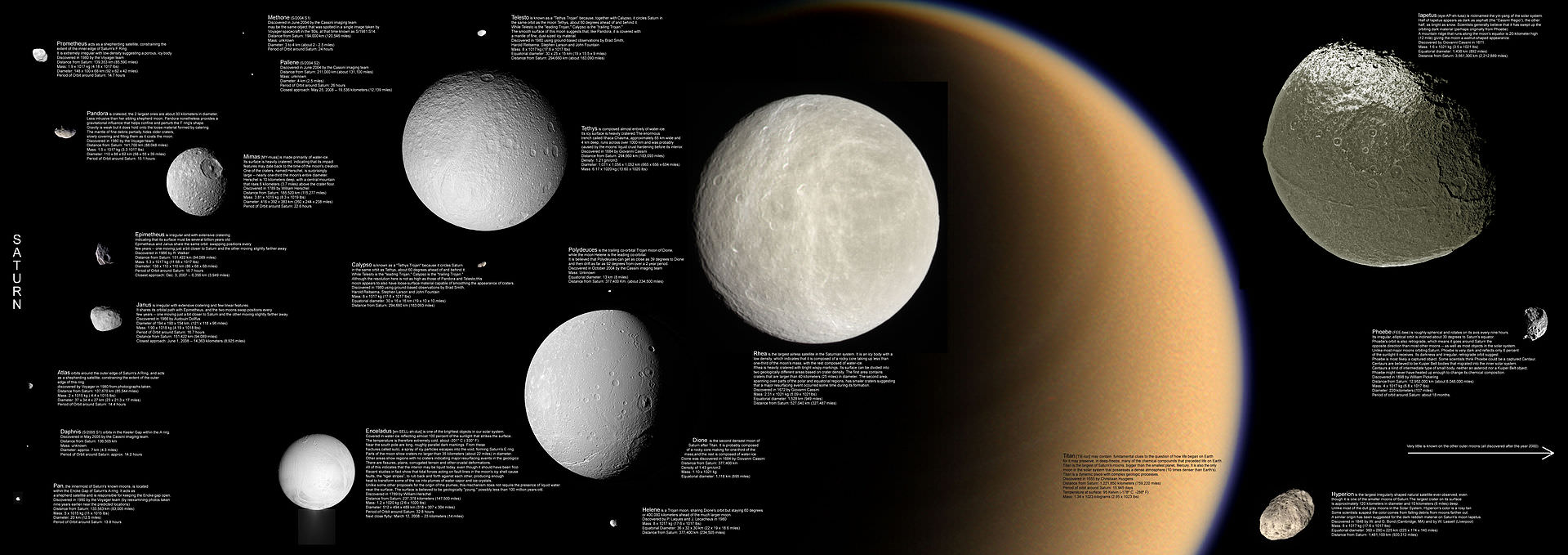
Continuing with our “Definitive Guide to Terraforming“, Universe Today is happy to present our guide to terraforming Saturn’s Moons. Beyond the inner Solar System and the Jovian Moons, Saturn has numerous satellites that could be transformed. But should they be?
Around the distant gas giant Saturn lies a system of rings and moons that is unrivaled in terms of beauty. Within this system, there is also enough resources that if humanity were to harness them – i.e. if the issues of transport and infrastructure could be addressed – we would be living in an age a post-scarcity. But on top of that, many of these moons might even be suited to terraforming, where they would be transformed to accommodate human settlers.
As with the case for terraforming Jupiter’s moons, or the terrestrial planets of Mars and Venus, doing so presents many advantages and challenges. At the same time, it presents many moral and ethical dilemmas. And between all of that, terraforming Saturn’s moons would require a massive commitment in time, energy and resources, not to mention reliance on some advanced technologies (some of which haven’t been invented yet).
Continue reading “How Do We Terraform Saturn’s Moons?”


